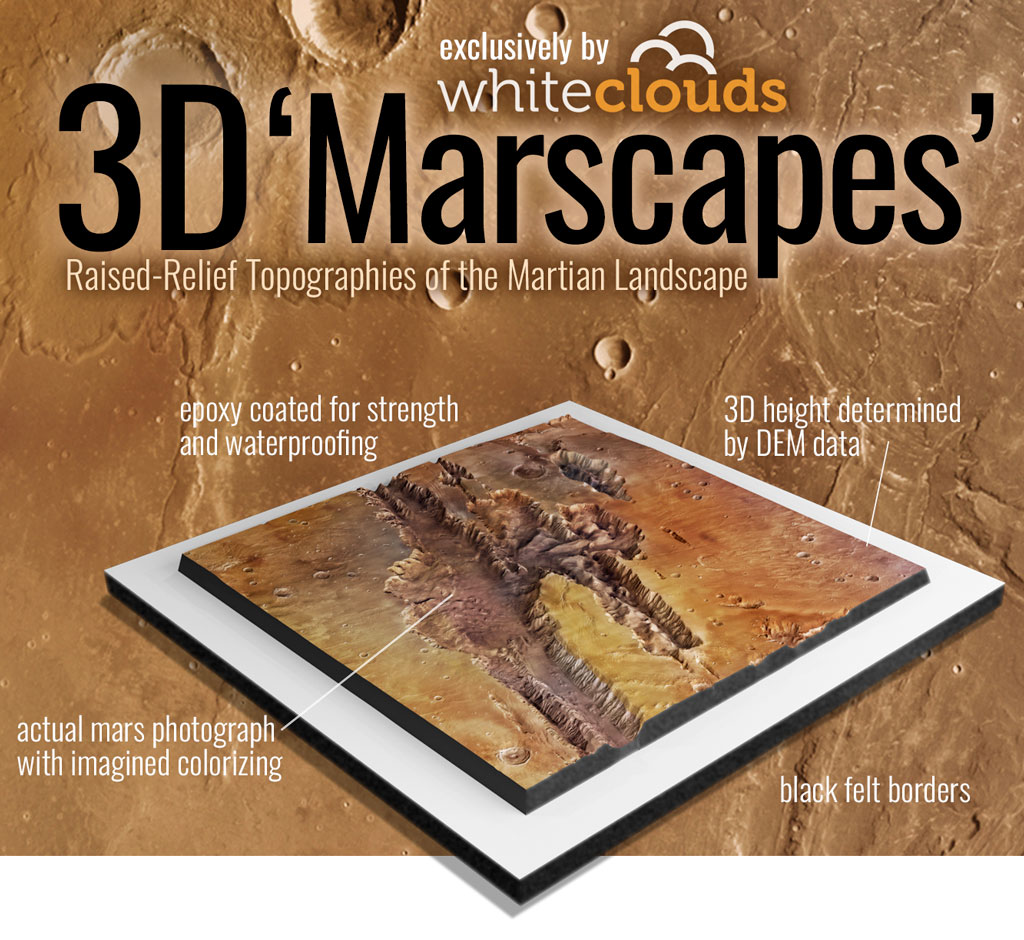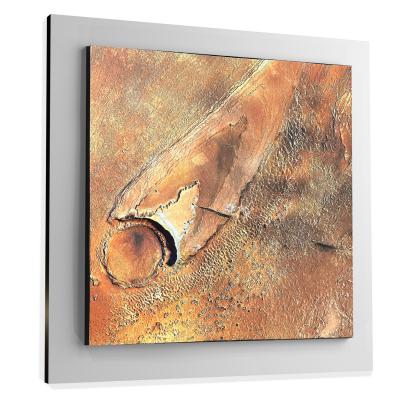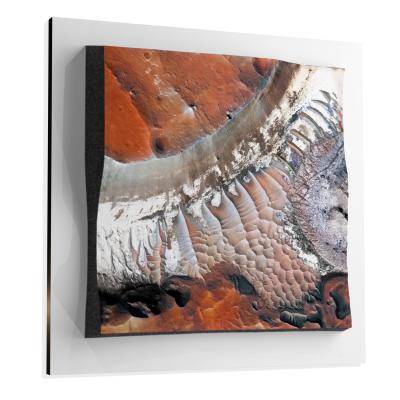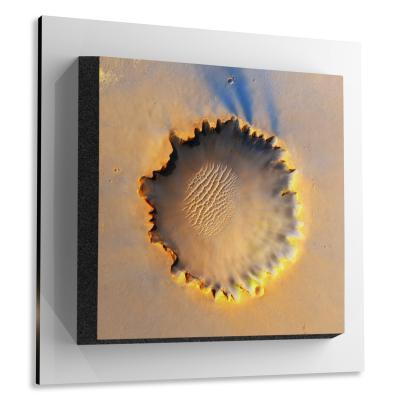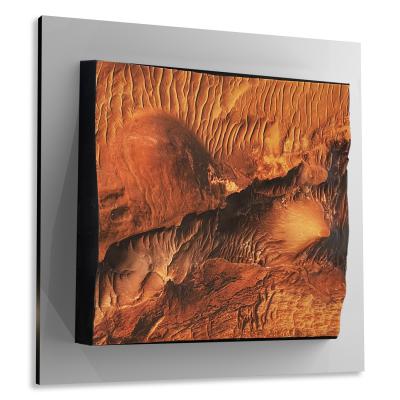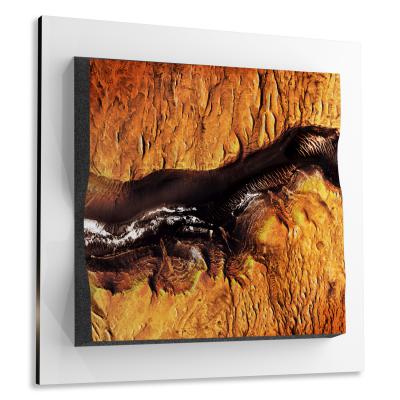Aureum Chaos
Aureum Chaos
We Build Custom 8K Mars Canvas Prints of Aureum Chaos
Did you know we make
custom
8K Mars Canvas Prints

and
3D Marscapes

Aureum Chaos
Aureum Chaos, one of the most intriguing and complex terrains on Mars, has captivated the attention of planetary scientists, geologists, and astrobiologists alike. Its dramatic landscapes—comprising canyons, mesas, and intriguing rock formations—provide a window into the Red Planet’s past.
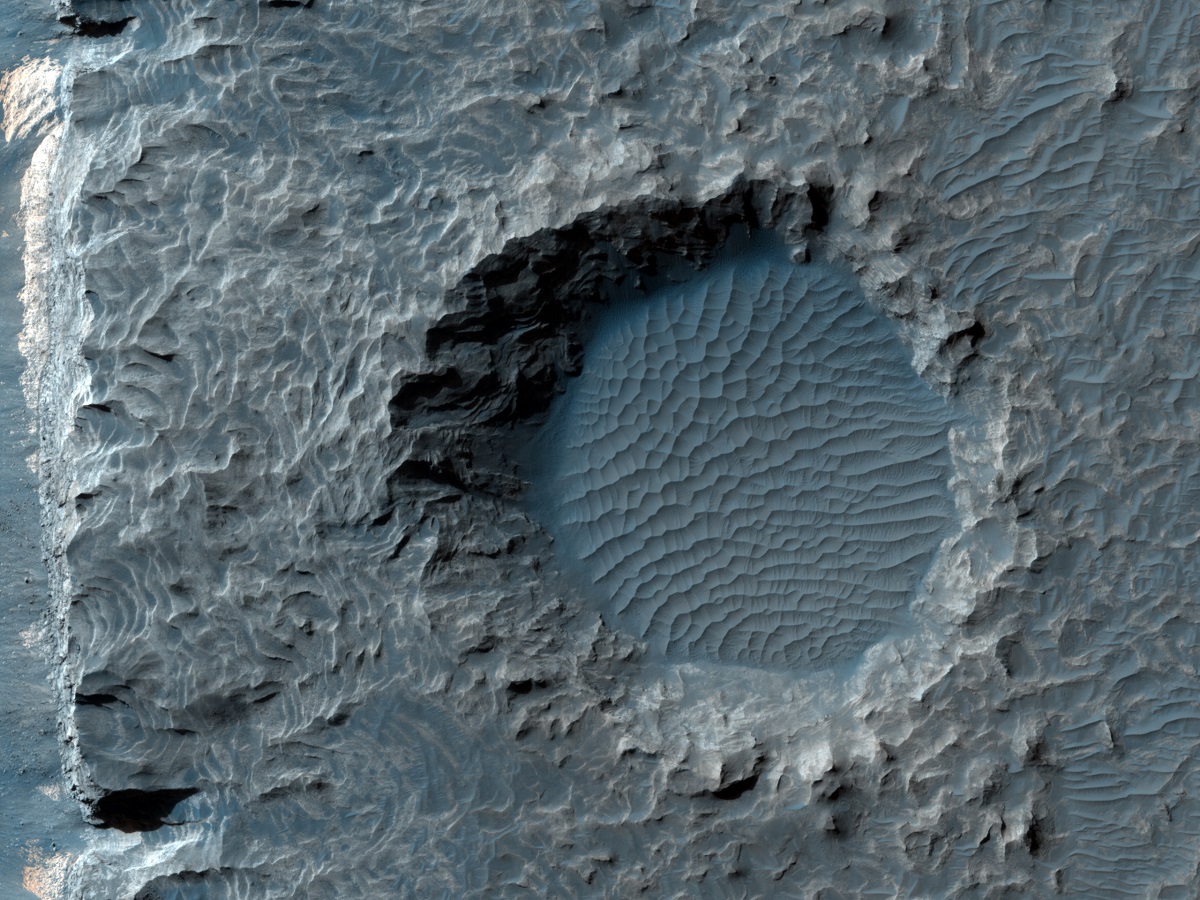 Exposed Light Material in Upland Region in Aureum Chaos
Exposed Light Material in Upland Region in Aureum Chaos
Geographical Location
Aureum Chaos is strategically situated in the equatorial belt of Mars, specifically within the latitudinal range of approximately 3°S to 10°S and longitudinal coordinates from 30°E to 45°E. Covering an immense area with a width of about 368 kilometers (229 miles), the region lies southeast of the Valles Marineris, the largest canyon system in the solar system. Given this proximity, Aureum Chaos forms a vital transitional terrain that bridges the gap between the ancient, heavily cratered southern highlands and the more recent, smoother northern plains. As a result, the region’s geography becomes especially significant for studies that aim to understand not just isolated geological features, but also the broader tectonic, volcanic, and sedimentary processes that have shaped the Martian surface. Its position relative to other crucial geological landmarks on Mars makes Aureum Chaos a linchpin for understanding the planet’s geological and climatic metamorphosis over billions of years.
Advertisement
Sample Marscapes
Geological Composition
The geological composition of Aureum Chaos presents a complex and intriguing tapestry that encapsulates key periods in Martian history. The foundational rocks are primarily of volcanic origin, overwhelmingly basaltic in nature. These basalts likely emanated from ancient volcanic activities that might have been linked to the tectonic shifts that created the neighboring Valles Marineris. However, this is only one layer of the geological story. The region also exhibits numerous sedimentary deposits, which could be the result of either aqueous or aeolian processes, or perhaps both. These sedimentary layers provide critical clues to the environmental conditions of different epochs. Spectroscopic data obtained from orbital platforms have added another layer of richness, revealing an extensive range of minerals, such as sulfates, clays, and potential hydrated salts. The identification of these minerals is compelling evidence that liquid water was a critical actor in the geological drama of Aureum Chaos, hinting at a more Earth-like past for Mars.
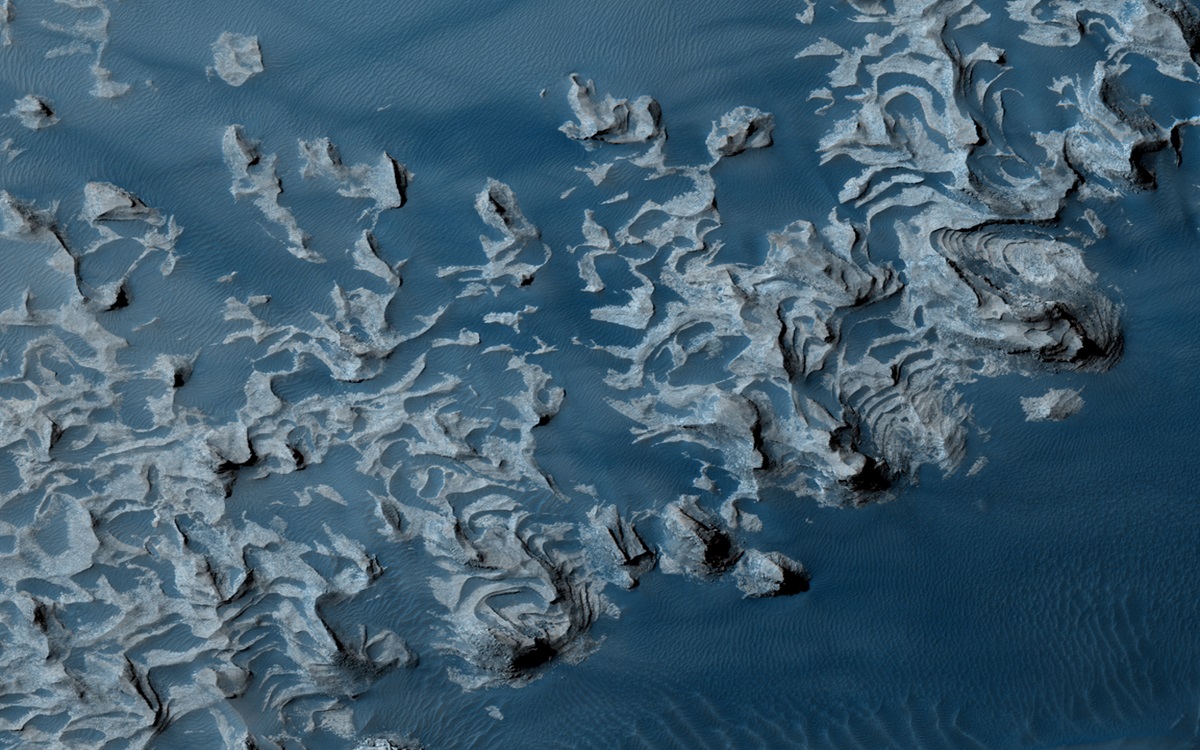 Slab of Layered Material in Aureum Chaos
Slab of Layered Material in Aureum Chaos
Significant Discoveries
Evidence of Ancient Water Bodies
One of the most pivotal findings in the exploration of Aureum Chaos is the strong geomorphological evidence pointing to ancient water bodies. The complex topography of the region, replete with features like gullies, interconnected channel networks, and formations resembling long-dried lake beds, provides robust support for theories suggesting a wetter, more temperate Martian past. These features are of immense significance as they could offer clues to the planet’s climatic history and the possible existence of past life.
Complex Layering
The region is also a natural archive of Mars’ geological history, with the canyon walls serving as a kind of timeline. These walls display a complex stratigraphy of rocks, layers of which have been deposited and eroded over the millennia. The visible strata provide invaluable data on sedimentary deposition, erosional cycles, and even potential volcanic activity, each layer adding a chapter to our ever-growing understanding of Martian and, by extension, planetary evolution.
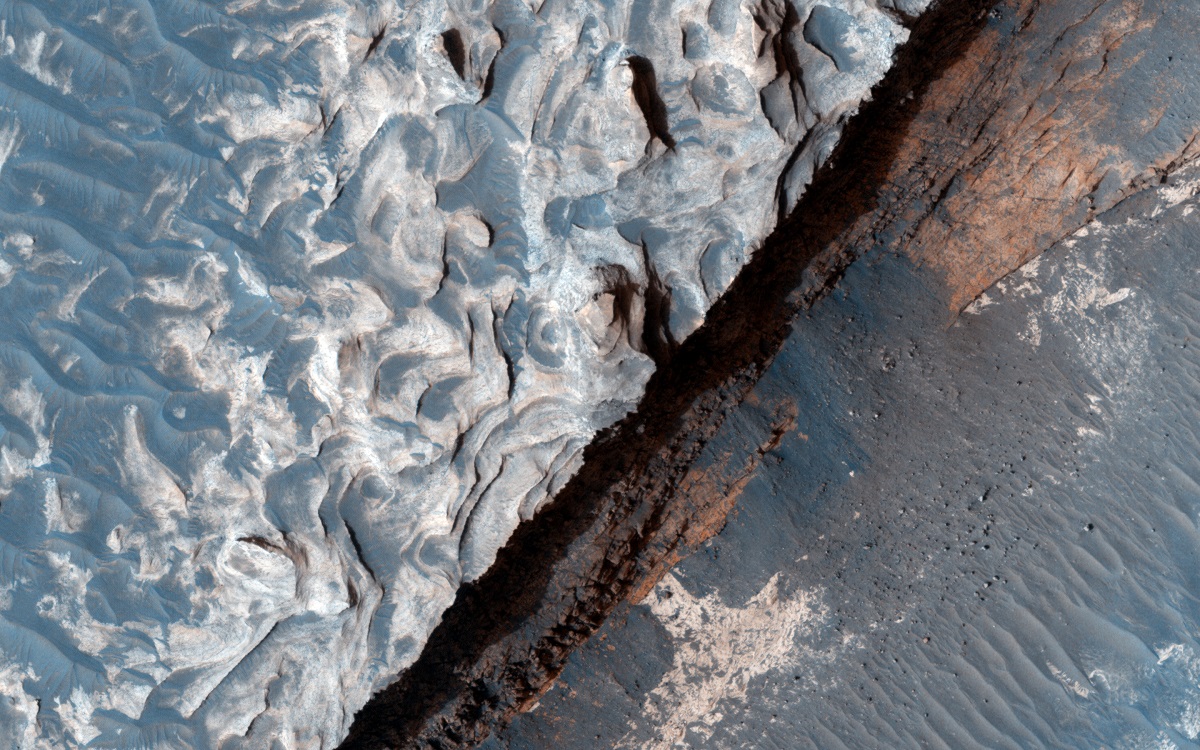 Colorful Aureum Chaos
Colorful Aureum Chaos
Scientific Missions
Aureum Chaos has garnered significant attention from the scientific community, thanks to a succession of missions aiming to unlock its mysteries. Leading the charge have been NASA’s Mars Reconnaissance Orbiter (MRO) and the European Space Agency’s Mars Express. These missions have provided high-fidelity images and critical topographical and mineralogical data. They built on the foundational observations and data sets supplied by earlier missions like the Mars Global Surveyor, which were pivotal in shaping the frameworks for current and future research. Future missions are already in the planning stages, and it’s likely that rovers, landers, or even crewed missions may eventually be dispatched to provide an even more detailed understanding of this fascinating area.
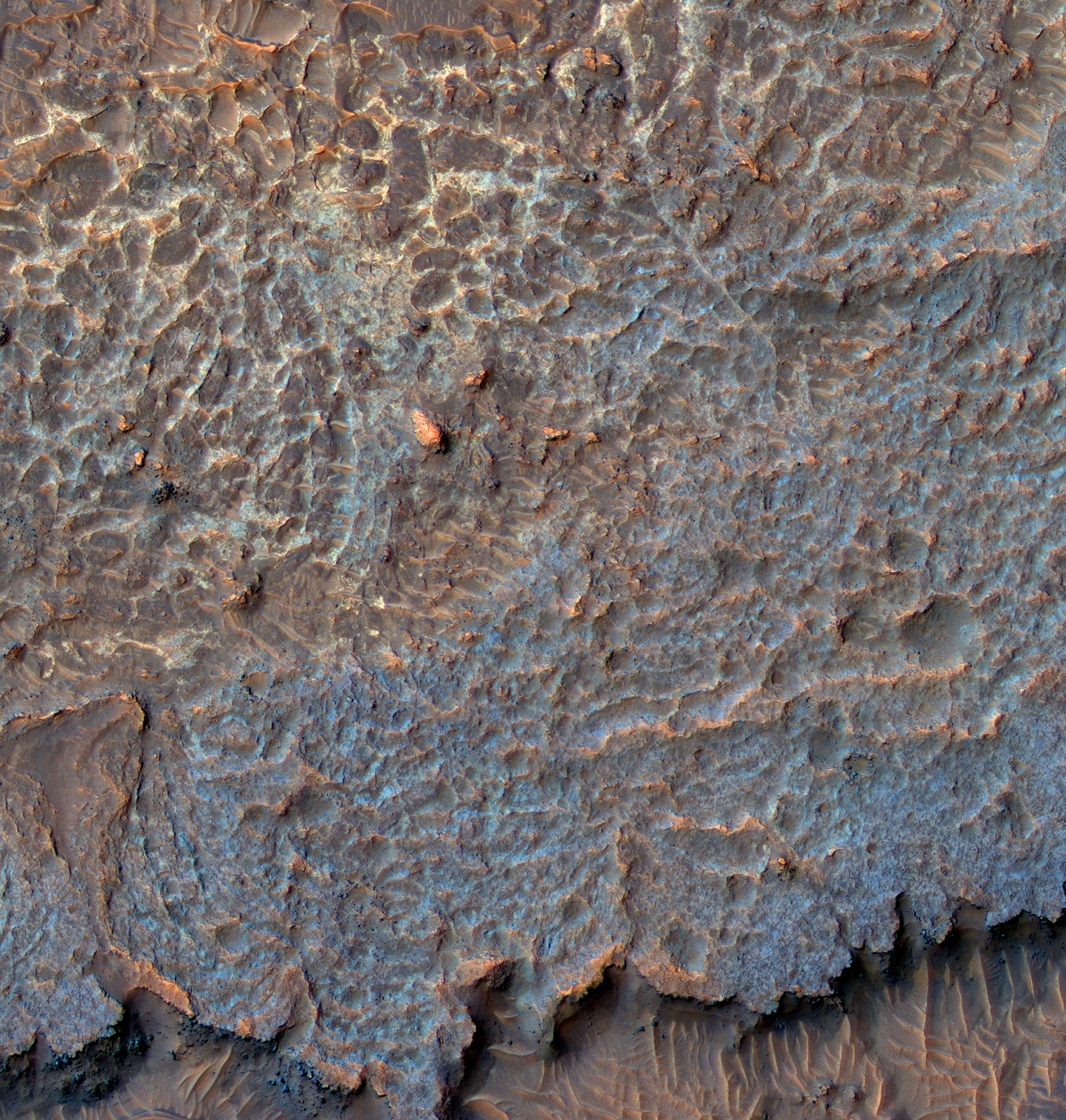 Plains Near Aureum Chaos
Plains Near Aureum Chaos
Geomorphological Features
The geomorphological profile of Aureum Chaos is nothing short of astounding. Characterized by a series of chaotic terrains, the region unfolds as a mosaic of collapsed areas, isolated mesas, and intricately sculpted multi-level canyons. Notably, erosional features like gullies and chasms are abundant, many of which are hypothesized to have been formed by ancient water flows. Adding to this geological intricacy are the aeolian marks—wind streaks and dust devil tracks—that pepper the landscape, offering glimpses into contemporary Martian atmospheric processes. Additionally, evidence of geological instability, seen in the forms of landslides and rockfalls, adds yet another layer of complexity to Aureum Chaos, making it a premier site for understanding the multifaceted geological forces shaping Mars.
Aureum Chaos stands as a remarkable showcase of Mars’ diverse and dynamic geological history. Its unique geographical location, intriguing geological makeup, and compelling geomorphological features make it an essential subject for ongoing and future scientific exploration. The region is a microcosm of the geological and climatic shifts that have shaped Mars over billions of years and will undoubtedly continue to be a focal point in the quest to understand the Red Planet’s past, present, and perhaps even its future.
With a multitude of scientific missions still underway and many more planned for the future, the mysteries of Aureum Chaos are slowly but surely being unraveled, each discovery bringing us a step closer to understanding not just Mars, but also the broader processes that govern planetary evolution.
Check out our 3D Mars Learning Center for more information on Mars and Aureum Chaos. You can also learn more at: NASA Mars Exploration.
More About Mars
Contact us today to learn more about our 3D services and how we can help you achieve your goals.
